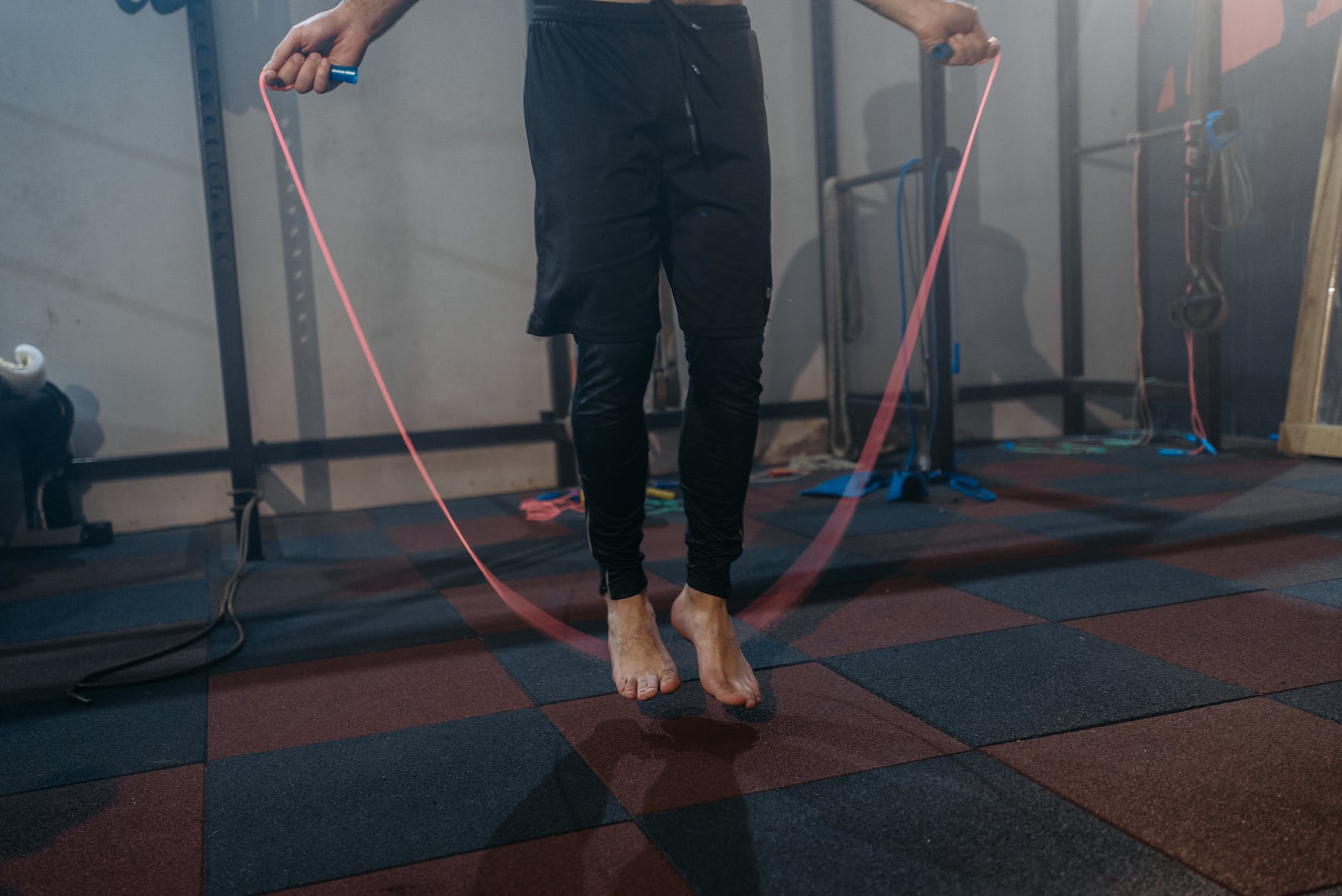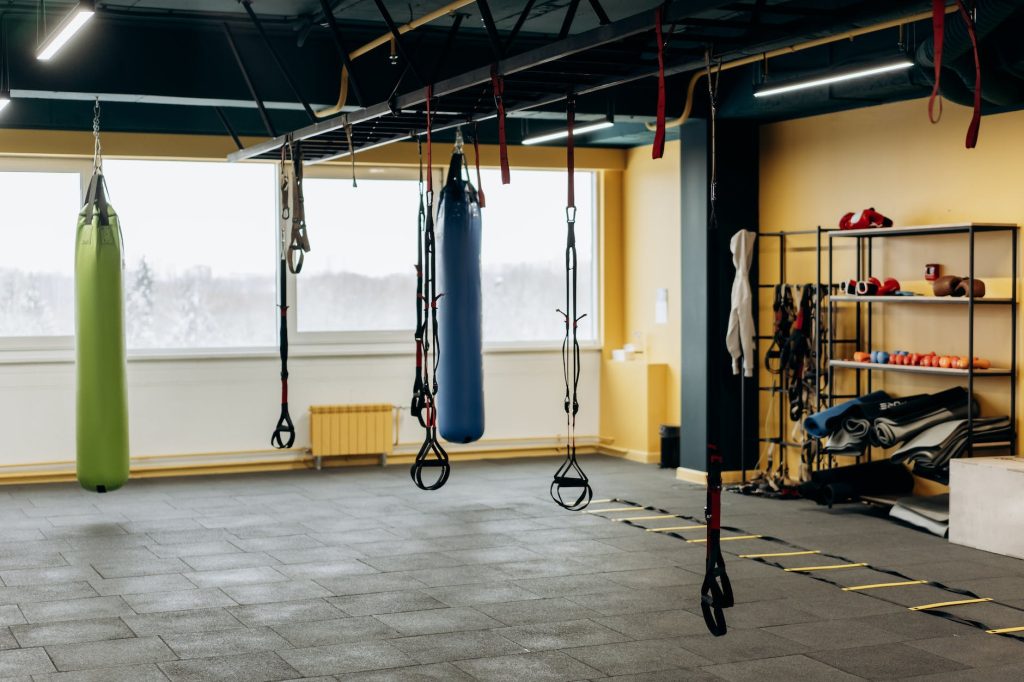When you’re in the gym or working out at home, it’s essential to ensure the flooring is up to par. That’s because the wrong type of flooring can dramatically affect your performance, safety, and even your long-term health.
Many different types of gym flooring are available, from rubber mats to weights to benches. This content will look at the different kinds of gym flooring and discuss how each can affect your workouts. We will also explore how these materials hold up over time and which provides the best cushioning for your joints. With this knowledge, you can ensure you are getting the most out of your exercise routines while protecting yourself from injury.
The different types of gym flooring
There are a variety of gym flooring options available on the market today. Each type of flooring has unique benefits and drawbacks that should be considered when making a purchase.
The most popular types of weight flooring include
- Rubber
- Foam
- Turf
- Carpet.
Rubber flooring is durable and easy to clean, making it a good choice for high-traffic areas.
Foam flooring is softer and quieter than other options, making it ideal for studios and home gyms.
Turf flooring is slip-resistant and provides a realistic feel for sports training.
Carpeted floors are comfortable and absorb impact well, making them ideal for yoga and Pilates classes.
When choosing weightlifting flooring, it is essential to consider the needs of your space and the activities that will take place there. For example, a weightlifting area will need different flooring than a cardio deck or dance studio. Once you have determined the best type of flooring for your needs, compare prices and read reviews before making your final decision.

The benefits of working out on gym flooring
When it comes to working out, the type of flooring you use can make a big difference. Gym exercise flooring is specifically designed to provide a safe and comfortable surface for exercise and can also help improve your workout results.
Here are some of the benefits of working out on gym flooring:
Improved safety: Gym exercise flooring is slip-resistant and cushioned, so it’s much safer than exercising on a hard surface like concrete. It can help to prevent injuries, and it also makes workouts more comfortable.
Better results: Gym exercise flooring can help you to get better results from your workouts. The cushioned surface helps absorb impact and reduce stress on your joints, leading to improved performance and reduced fatigue.
Increased durability: Weighlifting flooring is built to withstand heavy usage, so it’s much more durable than traditional home flooring options. It will last longer and stand up better to wear and tear.
The drawbacks of working out on gym flooring
Most gyms have flooring made of rubber, vinyl, or a similar material. While these materials are great for protecting your feet and providing a comfortable surface to walk on, they could be better for working out.
When you exercise on a hard surface like concrete, your muscles must work harder to support your body weight, and it can lead to increased muscle soreness and fatigue. Additionally, the impact of running and other high-impact activities can cause joint pain.
Gym flooring is also slippery when wet, increasing your risk of falling and injuring yourself. If you’re doing any cardio workout, it’s essential to be extra careful on gym flooring.
While there are some drawbacks to working out on gym flooring, it’s still a popular choice for many people. If you’re going to exercise on gym flooring, wear appropriate shoes and take extra care to avoid injury.
How to choose the right type of gym flooring for you
- First, consider the types of gym activities you’ll be doing. If you’re mostly lifting weights, you will only need as much cushioning as someone who plans to do a lot of high-impact cardio.
- Think about durability. If you have a lot of heavy equipment, you’ll need flooring that can withstand wear and tear.
- Take aesthetics into account. The flooring you choose should match the overall style of your gym.
Now that you know what to look for, here are some popular types of gym flooring:
Rubber Flooring
Rubber flooring is an excellent option for gyms because it’s durable and has some built-in cushioning. It comes in tiles or rolls and can be used indoors or outdoors. Rubber flooring is also slip-resistant, making it a safe choice for areas where people are working up a sweat.
Foam Flooring
Foam flooring is another good option for gyms, and it’s softer than rubber, so that it may be more comfortable for some activities. Foam flooring is also easy to install and comes in various colours and patterns. However, it’s less durable than rubber and may show wear over time.
Carpet Flooring
Carpeted floors are typical in gyms because they offer
a flawless look adds softness and warmth to the floor and generally increases the carpet’s life. Carpet installation typically requires removing the old floors and padding, as well as caulking or sealant where seams meet the floor. After this is complete, the new (carpet) floors are screwed or nailed to the original framing.
Conclusion
If you’re serious about your fitness routine, you must invest in gym flooring. It will help tone your body, and the extra padding will also help prevent injuries. And more importantly, the flooring can save you from losing costly time in the hospital.
Last Updated on December 23, 2022 by kingstar


Thank you for your sharing. I am worried that I lack creative ideas. It is your article that makes me full of hope. Thank you. But, I have a question, can you help me?
What is the question.